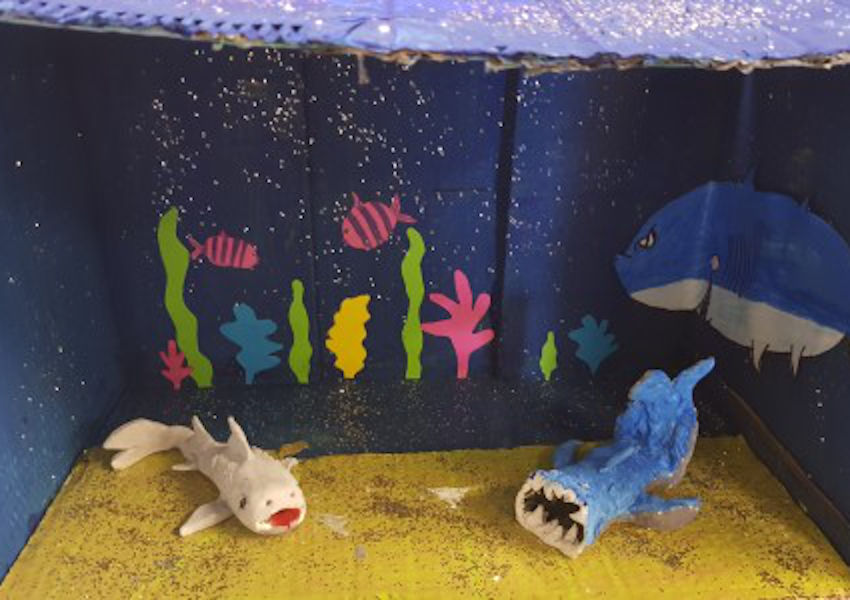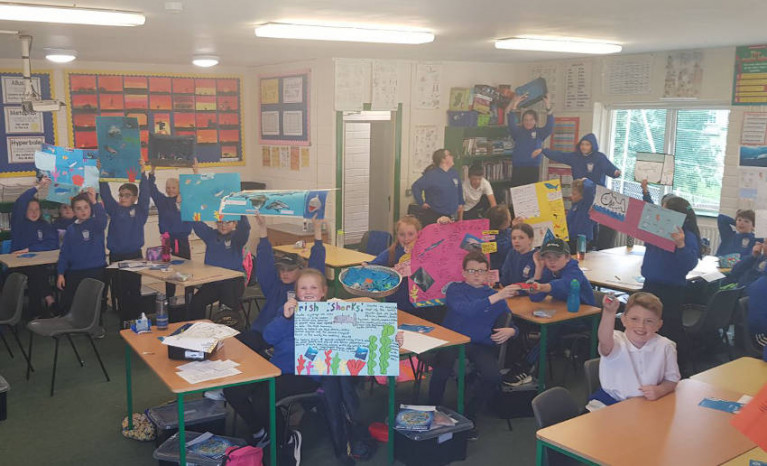Fifth and sixth class pupils at St Patrick’s National School in Craanford, Co Wexford had the opportunity to share their knowledge of sharks with RTÉ’s children’s news programme news2day this afternoon (Wednesday 4 November).
The youngsters recently took part in a project on the fearsome fish with the Marine Institute’s Explorers Education Programme, learning more about the sharks found in Irish waters and around the world.
Explorers outreach officer Padraic Creedon worked with teacher Jackie Cousins and her class as they were inspired by stories such as the discovery of a rare shark nursery 200 miles off the west coast of Ireland.
“Working with the Wexford class from my Galway base has been one of my highlights this year,” Creedon said.
“Seeing their work, from the shark frame on their classroom door to the detailed sculptures and art work of various Irish sharks created by the students, was fantastic.
“The children’s work showing the basking shark, which is found in Irish waters and the second largest shark in the world, was a particular favourite of mine.
 Shark diorama by pupils at St Patrick’s NS | Photo: Padraic Creedon
Shark diorama by pupils at St Patrick’s NS | Photo: Padraic Creedon
“This all highlighted the importance of engaging in ocean exploration and creating ocean champions at primary school level,” added Creedon, who also works at Galway Atlantaquaria.
“Connecting with the children on line and in the class with Padraic generated huge excitement for us all,” said their teacher Jackie Cousins. “The children's enthusiasm to learn about sharks helped us incorporate a range of subjects in the class from science and English to the arts.
“The Explorers approach with the class also gave the children a voice, where they were able to lead the discussion about sharks and what they wanted to learn.
“This sense of collective engagement as well as doing their own research opened up an amazing sense of discovery, where they have excelled and produced some incredible work, from writing facts and stories about sharks to producing a series of posters and artwork.”
Mícheál Ó Scannáil, the news2day presenter who interviewed the class in his home county, was also struck by the children’s enthusiasm for sharks and their ocean habitat.
“We had great fun in Craanford and the kids and Padraic taught me a lot about sharks. I still don't know if I’d hop in the sea with them, though!”
The segment featuring the pupils of St Patricks’s NS begins at 2m40s into today’s edition of news2day on the RTÉ website HERE.


























































